
Strip Cropping Fields In Agriculture: Why & How To Use
Strip cropping is a rewarding farming practice that provides additional advantages apart from solely growing yields. It proves efficient to use strip cropping to reduce soil erosion, especially on sloped lands. Correctly chosen neighboring species positively impact each other, thus boosting field productivity. However, strip cropping benefits also involve certain efforts, which are simpler to implement with smart farming.
What Is Strip Cropping?
The method’s name gives a clue to what it implies. Strip cropping suggests planting several cultures in strips alternated in crop rotation. It is a regular practice on sloped lands to control soil erosion. However, strip cropping in agriculture applies to even terrains as well when two or more species are cultivated together. It is similar to intercropping this way because alternative species grow in-between the cash plants.
Typical matches include grasses (e.g., hay, wheat) and corn, sugar beets, soybeans, etc.
What Is The Purpose Of Strip Cropping?
Basically, strip cropping agriculture is used either to improve soil health or support primary species growth. Secondary species seldom bring additional income to yield producers but are the cheapest conservation tillage technique. In particular, strip farming:
- tackles wind and water erosion;
- improves water infiltration;
- retains soil moisture;
- mitigates physical yield damage by wind and air-borne particles;
- decreases sedimentation;
- improves water quality;
- boosts soil fertility;
- participates in nitrogen fixation;
- attracts pollinators;
- controls pests.
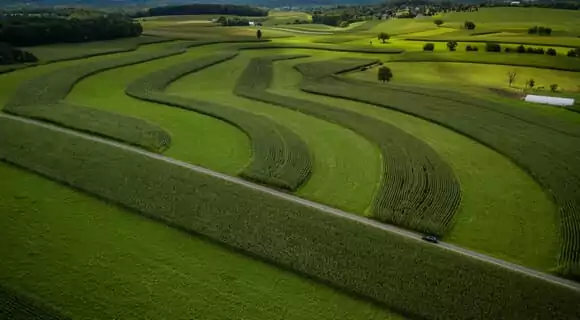
Benefits Of Strip Cropping
The diversity of purposes explains multiple advantages gained with the method implementation. The most important of them include:
- boosted soil health and fertility;
- improved water quality;
- retained soil moisture;
- raised water infiltration;
- reduced dust emissions;
- increased crop productivity,
- enhanced biodiversity, etc.
Fields analytics tool with access to high-resolution satellite images for remote problem areas identification!EOSDA Crop Monitoring
Types Of Strip Cropping
The accommodation of strips depends on the purpose and, correspondingly, their type. Thus, auxiliary plants can be arranged on the contour, as buffers, or in lines with other species. Correspondingly, there are contour, buffer, field, and wind strip cropping techniques, as discussed below.
Contour Strip Cropping
Crop bands are aligned according to the relief contour. The practice is particularly efficient on slopes. Compared with up and down rows, planting along the contour simplifies machinery movement and field operations. It also protects soil from rill formation and sedimentation by slowing runoffs down.
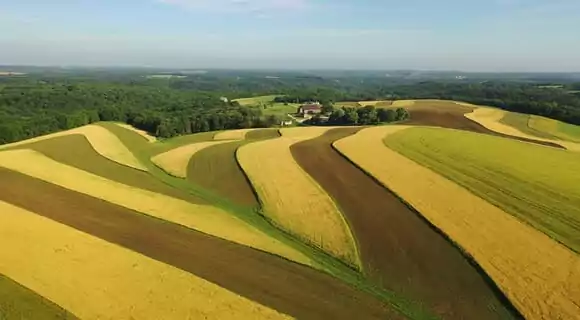
Field Strip Cropping
Crop bands are arranged in parallel lines across the field without following the contours. This method is suitable either for flat areas or gentle slopes, and it is used if the soil is not too prone to erosion. Field strip farming is also a solution when the previous practice is not feasible or rational due to relief specifics (e.g., irregular or wavy lands).
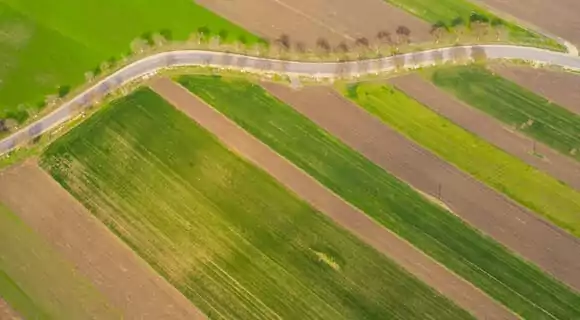
Buffer Strip Farming
Buffer planting is implemented on steep hilly slopes where typical contouring is complicated. Buffers (e.g., bushes, grasses, or legumes) grow between contour bands alternatively and can be either permanent (often native vegetation) or temporary. They are not necessarily of the same width and distance, which depends on the relief specifics. Their purpose is exactly what the name tells – they protect soils and cash crops serving as buffers. The practice is particularly winning on erosion-prone terrains when buffer vegetation holds the soil in place. Another useful agricultural practice in this case is terrace farming.
Buffer strips slow down sedimentation, nutrient and chemical leakage, thus preventing not only soil erosion but water pollution as well. This property is also characteristic of riparian buffers that are beneficial both to water and land.
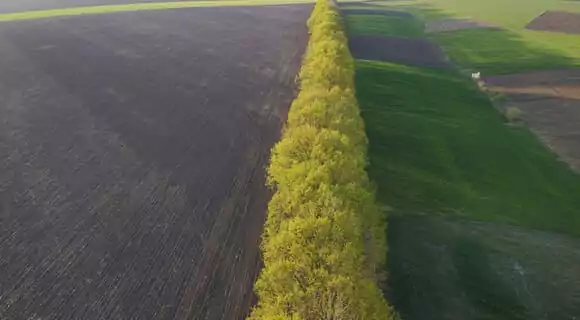
Wind Strip Cropping
In this case, protecting plants perpendicularly face the prevailing winds, so their position does not depend on the slope contour. These are long bands nearly of the same width that grow on even or almost even terrains. They serve as a shield and mitigate the wind damage on yields and soils, so the suitable options are high-growing corn, sorghum, Pennisetum, and more.
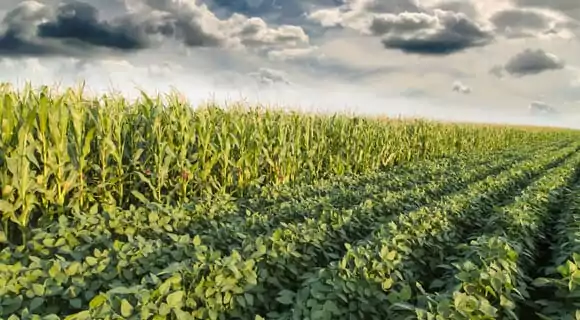
How Does Strip Cropping Prevent Soil Erosion?
It is typical to use strip cropping to reduce soil erosion, both on sloped and flat fields, especially by combining species with different root systems. Deep-rooted plants fix the soil with their roots and protect it from rill water erosion, being a natural barrier to flowing streams. Besides soil protection, strip cropping with cover crop may be additionally used as green manure or grazing and forage material.
Strip-till farming merges the described method with no-till farming and doubles its benefits. It allows minimum soil disturbance, thus decreasing erosion tendencies. Cash crop species grow between the residue, which is also effective for weed control and eliminates the negative effects of herbicide applications.
Strip cropping fields in agriculture contribute to the overall soil health by nitrogen fixation properties of legumes. When alternative species are used to attract pollinators to the primary species, they increase their productivity. If the aim is to attract pests with trap plants, and thus ‘distract’ them from the cash species, it decreases pesticide applications and reduces chemical contamination. Another helpful trick for pest control is to rotate strips of host and non-host species. In this case, non-hosts serve as a physical barrier to pests, eliminating their invasions, which will decrease chemical inputs as well. This way, strip cropping is an effective technique of regenerative agriculture.

Strip Farming With EOSDA Crop Monitoring
The advantages of growing several species in the same field together convince farmers to adopt the promising practice. However, additional benefits will also involve additional efforts. EOSDA Crop Monitoring is an effective agricultural software that makes the farming business simpler and less risky via remote sensing. It allows assessing vegetation health, tracking plant development, and planning field treatment events.
Cultivation with strip farming implies that each of the bands will be managed separately. That’s why tracking the vegetation state and conducting activities will also be separate for each species. By generating variable rate application maps, a farmer will get important information as to differentiated fertilization and precision irrigation needs in each of 2 to 7 zones. Thus, satellite imagery enables crop producers to identify exact areas requiring fertilization or irrigation and decide application amounts. In the case of strip cropping, this approach makes particular sense because different bands consist of different plants, at possibly different development stages, and different needs.
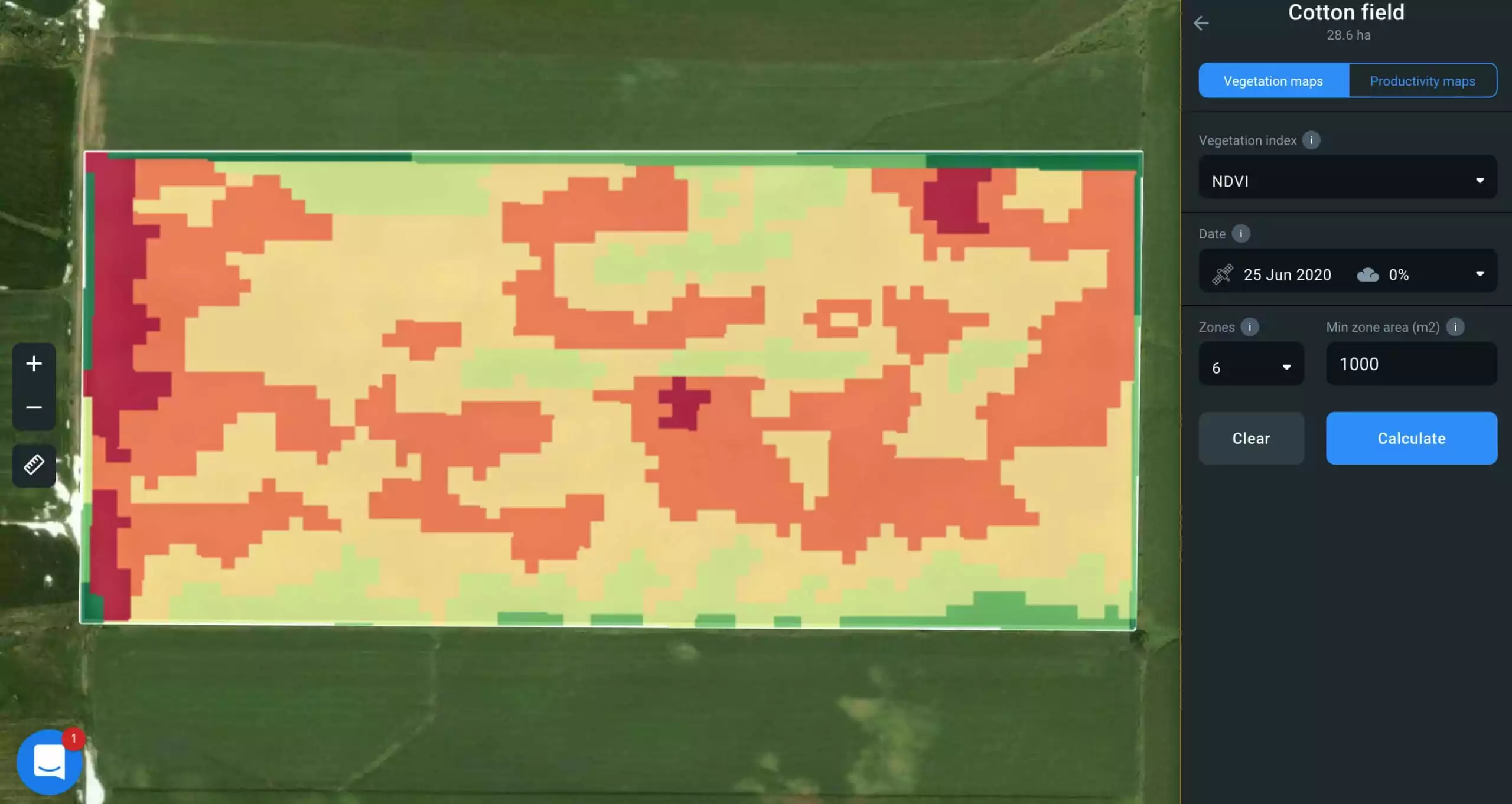
Besides, farmers can highly benefit from the newly-launched elevation map feature. Strip cropping is typical for sloped fields, and the elevation map facilitates decisions as to exact and correct strip distribution. Namely, EOSDA Crop Monitoring allows users to independently analyze how the field relief impacts:
- vegetation development;
- field productivity.
As for the technical side, after choosing a field, users can opt for the elevation map layer. Then, with the visualized index within the AOI range, they can see the current elevation value by mouse hovering (both the elevation map and the slope map).
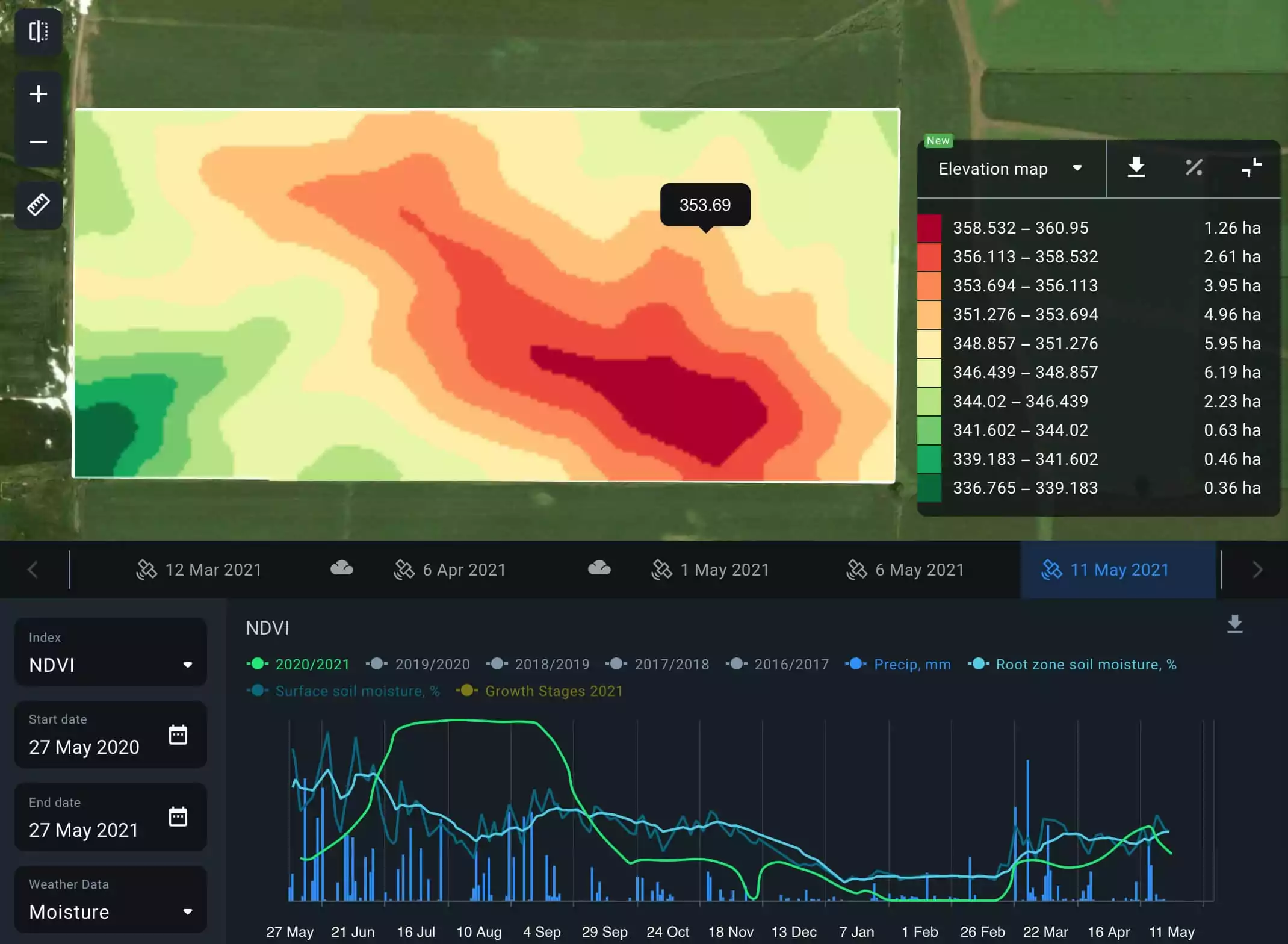
Another point about strip cropping agriculture is that different species require different field operations, thus increasing their total number. EOSDA Crop Monitoring helps farmers neatly arrange all the events in the Field activity log. The feature enables easy scheduling of any agricultural operations for each species in the field separately. It allows long-term planning, too. By entering details on performed events and analyzing them later, agriculturalists can predict inputs and elaborate an optimal irrigation or fertilization plan, identify the most fertile field zones to increase seeding rates, etc.
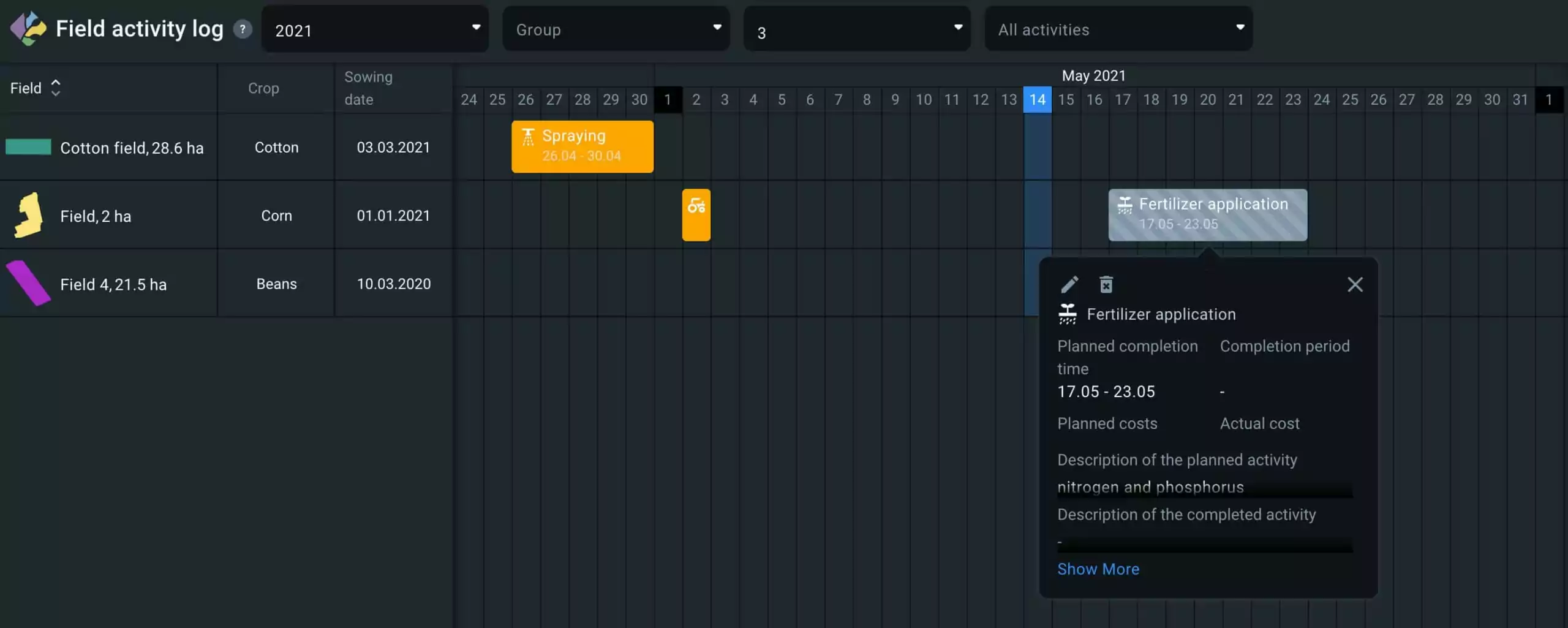
Apart from the above-mentioned features, the farming platform offers users other useful functionalities as well.
Is Strip Cropping Sustainable?
By reducing soil erosion, preserving field fertility, and eliminating environmental pollution, strip cropping makes farmlands suitable for use in the future as well. Thus, the approach is not only beneficial for soil and yields but belongs to sustainable farming practices, meeting their primary goal of soil conservation and rational consumption of natural resources. With smart agricultural software, the feasibility of strip cropping agriculture implementation considerably increases. Request a demo and see how EOSDA Crop Monitoring can help you manage your fields.
About the author:
Kateryna Sergieieva has a Ph.D. in information technologies and 15 years of experience in remote sensing. She is a Senior Scientist at EOSDA responsible for developing technologies for satellite monitoring and surface feature change detection. Kateryna is an author of over 60 scientific publications.
Recent articles

Analyze 2025 & Plan Your Best Year Yet: LandViewer Christmas Offer
It’s the most wonderful time of the year! The Christmas holidays are here, and so is your chance to analyze 2025 and plan a prosperous 2026 with more affordable Pro plans in LandViewer.

EOSDA Models Climate Change Impact On Sugarcane Yields
EOSDA modeled future temperature, rainfall, and other climate impacts on Veracruz sugarcane. The results help growers plan long-term adaptation strategies, including timing, varieties, and irrigation.

EOSDA LandViewer Black Friday Sale: Exclusive Offers & Giveaway
This Black Friday, LandViewer offers new users the chance to save on monthly plans, get extra months with yearly subscriptions, and participate in a free annual plan giveaway.